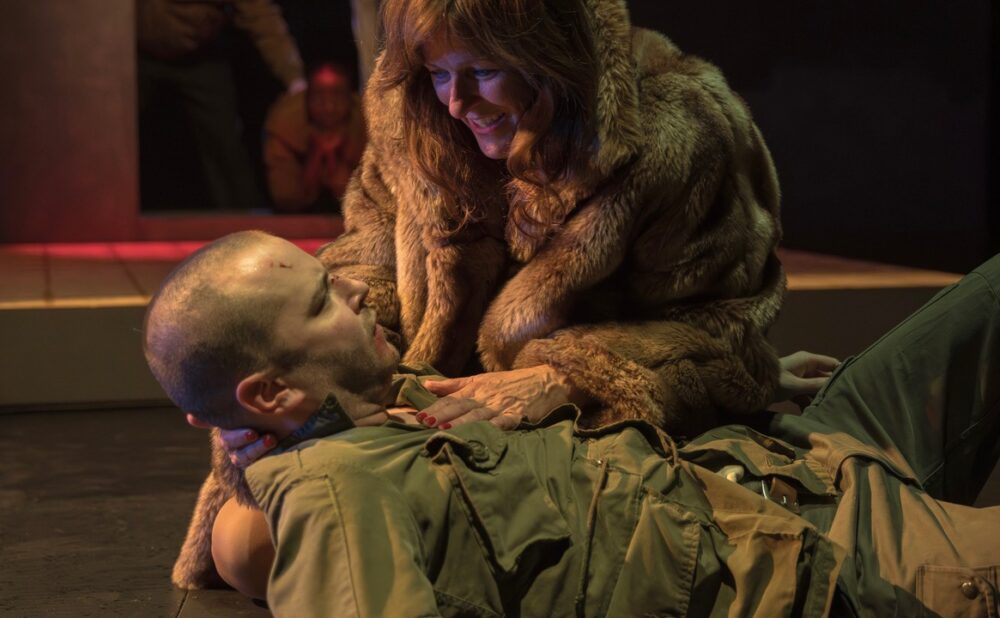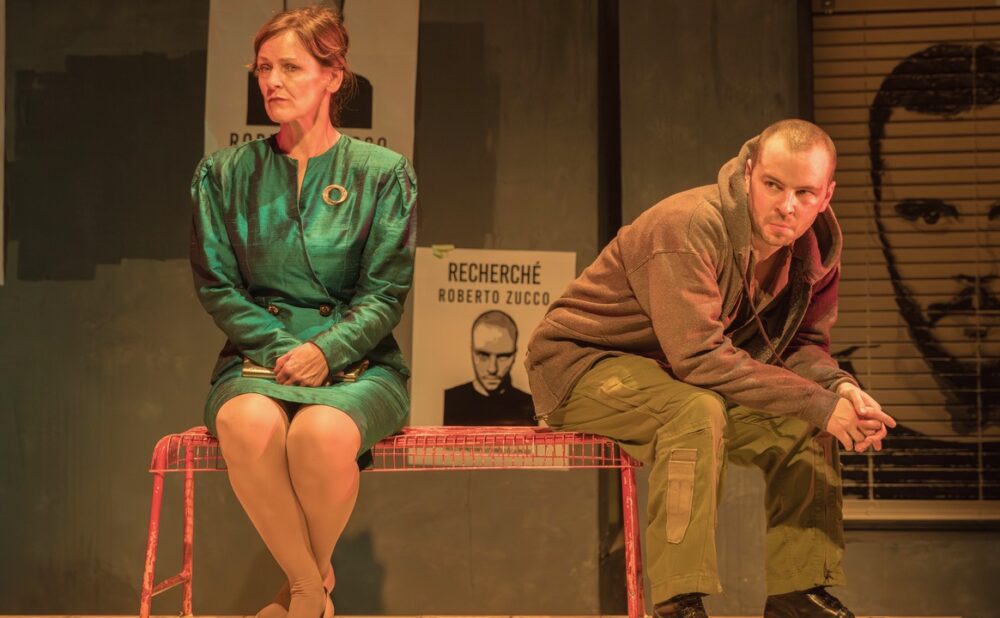Review: Roberto Zucco glows and horrifies at Buddies in Bad Times Theatre
Roberto Zucco finds its place in the avant-garde through fracturing form
What: Roberto Zucco
Where: Buddies in Bad Times Theatre, 12 Alexander St.
When: Now, until Sat., Oct. 5
Highlight: Exquisite design elements that create a cacophonous experience
Rating: NNNNN (out of 5)
Why you should go: Affronting and poetic script realized beautifully by ted witzel
THE CHARACTER OF Roberto Zucco is described as “wild, violent, animal, bastard.” And to be honest, I’d describe Buddies’ production of Roberto Zucco quite similarly.
The historic Buddies in Bad Times theatre kicks off its 46th season with a grimy tale of murder, lust and humanity. Roberto Zucco, serving time for the murder of this father, breaks out of jail and roams the streets of 1980s Europe. He’s listless, blood-hungry and maybe a little bit lonely. The rest of the show unfolds in a series of scenes following his jailbreak as he wreaks mayhem upon society.
Oh, this show is something you haven’t seen before.
In their Buddies directorial debut, artistic director ted witzel’s Roberto Zucco in its 95 minutes engages the audience in a show of the senses. Every moment on stage is thought through by witzel from every design element to create a cacophonous experience. In particular, the sound design and composition by Dasha Plett are exquisite. From the high-pitched buzz subtly creeping in behind dialogue to the recurring piano melody that underpins moments of cruelty, the sound design snaps the production into high definition. The lighting design by Logan Raju Cracknell is equally as palpable, using smoke and dreamy hues of purples, reds and blues to create a neon-infused experience.
The ensemble of this cast is grounded and magical: every moment pulsing with energy and poise. Fiona Highet, Kwaku Okyere, Olyin Oladejo, Daniel MacIvor and Samantha Brown fill in as a host of personalities Zucco encounters on his Odyssean journey through the city. Each with their shining moments, the monologues by MacIvor as “gentleman” and Oladejo as “sister” are engrossing. Brown and Okyere play an emotionally gutwrenching brother and sister. And, most notably, Jakob Ehman is a remarkable Robert Zucco: equal parts haunting and sympathetic, Ehman drives the story forward.
The text by Bernard-Marie Koltès and translated by Martin Crimp is affrontingly poetic while simultaneously knocking the audience in the stomach with horror. The energy on stage is palpable, dangerous and curiously introspective. Shout out to fight and intimacy director Anita Nittoly for choreographing both tender and nauseating moments of love and violence.
Roberto Zucco finds its place in the genre of the contemporary avant-garde through the fracturing of form — from on-stage handheld microphones used by the cast in moments of introspection to a dreamy script that at moments bounces from thriller to a farce. At the beginning of each scene, the scene titles are announced on a screen in bright red text in the upper corner of the stage, the production never letting us forget that we are, in fact, watching a show. And at the end of a scene, key lines from the show echo, a collective fading memory of what we as an audience just saw unfold.
The set design by Michelle Tracey (who also designed the costumes) contributes to this bending of form: composed of three block-like walls, they collapse, rotate and disassemble to form a variety of locations and feelings. In particular, I adored a little grass rug they casually rolled out to transform the stage into a park.
All these elements seem like they would make a piece feel disconnected, but for Roberto Zucco, it creates a cohesive experience unlike any other.
Without spoiling the end of this show, all I can say is that it is an absolute feast of the senses. The cacophony of production elements used wraps up this show in a gorgeously existentialist and open-ended bow — one that you should absolutely witness in person.







